How to overcome addiction to sweets and get rid of cravings for sweets, chocolate, sugar — scientific facts
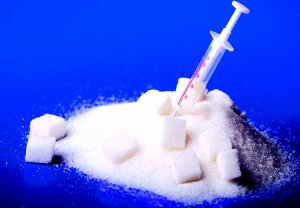 Scientists have been bluntly stating for over 20 years that the world is now gripped by a real sugar "addiction". And as the main argument they indicate statistics
.
Scientists have been bluntly stating for over 20 years that the world is now gripped by a real sugar "addiction". And as the main argument they indicate statistics
.
According to statistics, back in the middle of the 19th century, for every inhabitant of developed countries, on average, there were 2 kilograms of sugar per year.
At the beginning of the 21st century, this figure is 20 times higher - about 40 kilograms of sugar per year per person (and for some, this figure reaches 70-80 kilograms). And it is this factor that leads to the fact that simple carbohydrates and protein foods predominate in the diet of modern humans.
But fiber and plant foods make up only a tenth of the diet (in the middle of the 19th century, this figure was 2/3 of the total diet).
Research confirms that regular and excessive sugar consumption leads to changes in the brain that are highly similar to drug addiction.
Other large-scale studies also leave no doubt that psychological dependence on sugar and flour really exists and it is quite difficult to overcome it.
So what is the danger of such a habit and how to deal with it? Can it be considered a disease? How do scientists and doctors recommend getting rid of addiction to sweets forever?
Recall that earlier we considered 10 best products to improve mood .
Content
What is the name of the disease — the ICD-10 code
It is worth pointing out right away that the disorder, which is called sugar addiction, is not a disease in the direct sense and does not have an official name. Conditionally, it is referred to as "addiction syndrome" (ICD code-10 &8212; F10.2).
General information
Moderate sugar consumption causes practically no harm to health, but abuse subsequently leads to obesity, cardiovascular diseases, stroke, diseases of the endocrine system (including diabetes mellitus).
 One of the most severe complications of such addiction is diabetes.
It develops against the background of degradation and depletion of the pancreas, which is responsible for the production of insulin. Only with the help of this hormone can carbohydrates be absorbed – it is necessary for the supply of glycogen to cells (and with a lack of insulin, sugar is not absorbed and remains in the blood – from this its level increases).
One of the most severe complications of such addiction is diabetes.
It develops against the background of degradation and depletion of the pancreas, which is responsible for the production of insulin. Only with the help of this hormone can carbohydrates be absorbed – it is necessary for the supply of glycogen to cells (and with a lack of insulin, sugar is not absorbed and remains in the blood – from this its level increases).
And it is sugar addiction that is the most common initial cause of type 2 diabetes mellitus (that is, acquired).
Pancreatic cells simply wear out and stop producing enough insulin, and in the future fibrosis may develop altogether, that is, the replacement of glandular tissue with fatty or fibrous. At such stages, it is necessary to prescribe insulin injections – this is not a medicine in the direct sense, but a forced normalization of blood sugar levels.
Causes of occurrence
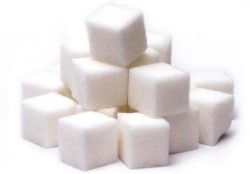 The process of assimilation of simple carbohydrates in the brain is accompanied by the production of dopamine, a hormone that is a neurotransmitter.
The process of assimilation of simple carbohydrates in the brain is accompanied by the production of dopamine, a hormone that is a neurotransmitter.
According to doctors, it is dopamine that has the greatest influence on human behavior. A surge in the level of this hormone is accompanied by a feeling of joy, love, inner satisfaction .
But why is it addictive? Dopamine can become addictive in the body. This conclusion was made by scientists based on tests conducted under the guidance of Margaret Rice from New York University. What were they? Laboratory rats were given glucose in their food, and with it cocaine (to which addiction also develops quite quickly). The amount of food in the diet was constantly reduced, but glucose was increased.
Subsequently, all rats developed "dopamine addiction". Moreover, they preferred sugar. That is, after the rats stopped being given cocaine, their behavior practically did not change. But it was worth removing glucose from the diet – all animals had somatic disorders . And they did not disappear even after the restoration of a normal balanced diet (traditional for rats).
In fact, the same thing happens to humans. Why was cocaine also included in the diet? To demonstrate that sugar addiction is even stronger than traditional drugs.
In total, the main causes of "candy addiction" are a constantly increased dose of dopamine in the blood and human psychology. After all, a person gets used to this "comfortable state" and does not want to change anything. If you simply refuse chocolate, sweets and other sweets or sharply limit their use, the dopamine level decreases exponentially. All this is accompanied by a traditional withdrawal syndrome (as in smokers or alcoholics who have given up an addiction).
It is also worth mentioning that sweet, like flour, is for many the easiest option to quickly get rid of stress or depression. But this "stress jamming" is often a habit.
Another common cause of sweet addiction – this is overeating in children . Moreover, parents contribute to this, who literally force the child to eat a lot of sweets. It should not be forgotten that only 2 kilograms of sugar per year is more than enough for the normal course of all biochemical processes in the body.
So what are the main initial causes of this disorder? The following can be distinguished:
- Frequent stress or chronic depression;
- Overeating, abuse of sweets;
- An unbalanced diet (the body at the same time "requires" sweets in order to quickly Get energy , without which the brain simply cannot work properly).
And one more nuance – in children, such dependence passes quite easily. But for adults, especially after the age of 30, this is already a serious problem. Doctors also claim that women are more susceptible to this disease than men . And this is due to the individual specifics of the female hormonal system.
Symptoms and Signs
The main symptoms of sugar addiction (including early signs of its presence):
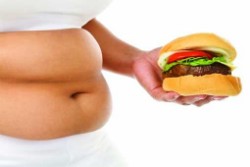
- Preference for sweet tea;
- Giving up breakfast in favor of a quick snack (which necessarily contains some dessert);
- Signs of sedation when giving up sweets;
- Excess fat weight (since glucose, which cannot be absorbed immediately, is transformed into fatty compounds and greatly prevents you from losing weight);
- Elevated blood sugar (with a general blood test, without preparation).
Dermatologists also claim that those who abuse sweets have a much worse skin condition than healthy people. This is due to the generation of sebum, which is able to clog the pores of the upper layer of the epithelium.
How do I check if I have an addiction? Do a small test and just try to give up everything sweet and, in particular, sugar for 2 days. Although such a "test" sounds simple, few people can withstand it.
Health effects
What can an uncontrolled craving for sweets lead to? The most common consequences:

- Obesity. Everything is very clear – the body is simply not able to absorb the amount of glucose that it receives. As a result, sugar is transformed to adipose tissue and "settles" in the subcutaneous fat layer.
- Diabetes mellitus. Constantly high blood sugar levels cause the pancreas to work "hard", producing huge amounts of insulin. Sooner or later, this leads to the degradation of the cells of the glandular body. At the same time, less insulin is produced and sugar simply stops being absorbed.
- Diseases of the cardiovascular system . Sugar is transported through the body through blood vessels. At the same time, glucose cells are quite aggressive to elastic muscle tissue (which the vessels consist of) – they damage it, over time micro-scratches form, in which blood clots eventually form. In the worst case, it ends with a massive heart attack or stroke, that is, when blood clots block the supply vessels of some organs or the brain.
- Neuroses. Sudden changes in dopamine levels can provoke and chronic depression , and neuroses. In difficult cases, sclerosis or dementia develop altogether (already in elderly patients).
- Infertility. It is already clear how high sugar levels affect the functioning of the endocrine system. But hormonal disorders very often lead to infertility, and in women more often (and there is also the possibility of early menopause, that is, when the ovaries cease to perform their main function at the age of about 40 years).
- Dental diseases. Glucose begins to actively break down in the mouth. And that is why it is one of the best environments for the spread of pathogenic infections. &8212; they absorb sugar. That is why those who often eat sweets run the risk of getting caries quickly enough.
Also check out the infographic:
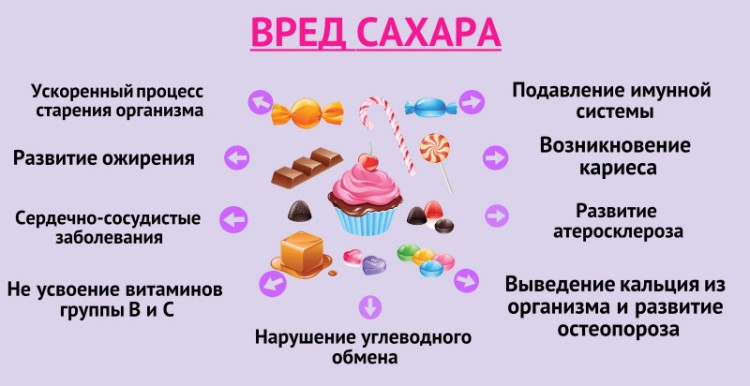
In fact, there could be a lot more consequences. The liver, the gastrointestinal tract, and the cardiovascular system suffer from the abuse of sweets.
Regularly elevated sugar levels are often the cause chronic fatigue is a consequence of excessive accumulation of glycogen and lack of physical activity (it is during the performance of any exercise that glucose is actively absorbed and broken down to derivatives of elements, for example, fructosine).
How to get rid — 7 steps
Getting rid of severe food addiction is quite difficult. As mentioned above, this type of addiction is stronger than traditional drugs. But due to the lack of direct intoxication, medicine does not practice compulsory treatment of dependence on sweets. So how do you beat it and what advice do the doctors themselves give? Here are the 7 most effective ones.
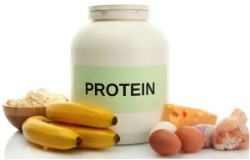
1. Eat more protein
Protein (proteins) directly affects the feeling of hunger. Accordingly, the more protein a person eats, the less pronounced the feeling of hunger he experiences.
This helps to give up sweets in favor of other foods and dishes and overcome the addiction.
2. Include B-group vitamins in the diet
 You can just eat bananas or chicken, fish dishes, or you can even use combined vitamin preparations.
You can just eat bananas or chicken, fish dishes, or you can even use combined vitamin preparations.
The best option would be to include beans, legumes, peas, fish dishes, red caviar in the diet.
B-group vitamins also help to normalize the endocrine system in severe hormonal disorders (including pregnancy).
3. Give up sugar substitutes
 There is an opinion that products that use sugar substitutes do not cause addiction.
There is an opinion that products that use sugar substitutes do not cause addiction.
Nutritionists do not share this opinion. Moreover, they warn that some substitutes increase the feeling of hunger and only provoke cravings for sweets.
Where are sugar substitutes found? In diet desserts, as well as in many carbonated drinks.
4. Give up low-fat foods
 Firstly, their sugar content is usually very high.
Firstly, their sugar content is usually very high.
And also flavoring additives are added to them , which increase the feeling of hunger.
The use of such products often leads to the fact that a person begins to overeat regularly. And at the same time, sweets begin to prevail in the diet.
5. Drink as much water as possible
 High blood sugar levels lead to the fact that sodium actively accumulates in the body, but potassium decreases (since these elements inhibit each other).
High blood sugar levels lead to the fact that sodium actively accumulates in the body, but potassium decreases (since these elements inhibit each other).
This is one of the reasons for the rapid gain of fat mass and disruption of the gastrointestinal tract.
How much water should I drink? Recommended from 1.5 to 2.5 liters per day (depending on physical activity and ambient temperature). About the importance of water for brain function you can read in a separate article.
6. Visit a nutritionist
 It is quite easy to normalize the concentration of dopamine in the blood with the help
of dietary correction
.
It is quite easy to normalize the concentration of dopamine in the blood with the help
of dietary correction
.
It is best to contact a nutritionist for help – he will take into account the individual physiological parameters of the patient. There are no "universal" diets in this regard .
Most often, it is recommended to include seafood, chicken breast, fermented dairy products (with a normal fat content), whole grain bread, vegetables and fruits with a high content of non-digestible fiber in the diet.
7. Don't buy sweets
 It would seem to be the most banal advice. Nutritionists recommend to completely abandon the purchase of sweets in shops, cafes and other establishments.
It would seem to be the most banal advice. Nutritionists recommend to completely abandon the purchase of sweets in shops, cafes and other establishments.
Alternative – prepare desserts on your own , at home.
There is nothing complicated about this, but the patient eventually develops a kind of reflex – to eat sweets, which means that he will have to spend several hours in the kitchen beforehand. That is why he gradually refuses desserts.
What can replace sweets — 7 products
The easiest option is to include protein–rich foods in the diet. These include:
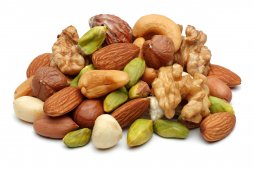
- Chicken breast. In principle, any other bird (duck, turkey, and so on) will do. This is one of the healthiest meat dishes. There are a lot of proteins there, but there are practically no fats and carbohydrates. Such meat is also quickly and easily digested.
- Seafood. They also have a lot of proteins. And at the same time, the content of marine fish is quite high omega-3 fatty acids which help the brain to produce dopamine, serotonin. The craving for sweets is leveled at the same time, since the concentration of endorphins will be high without it.
- Nuts. Best of all – walnuts, pistachios. They also contain a lot of omega-3 fatty acids, as well as potassium, iron, and zinc, which are also used by the brain to regulate the endocrine system. It is also known that Nuts improve memory .
- Dark chocolate. Oddly enough, there is not much sugar in it. But dopamine is produced from it quite quickly – this is facilitated by phytoncides contained in cocoa beans. The main thing is that it is black bitter chocolate , since it contains almost 3 times more cocoa than milk. But sugar is 2 times less. It is better to eat chocolate often, but in small portions – literally 1 "square" 3-4 times a day will be enough.
- Bananas. They contain B-group vitamins and phytoncides that help produce endorphins, which is why bananas boost your mood . At the same time, bananas contain simple glucose, which is synthesized almost instantly to glycogen – the body will not lack energy at the same time.
- Dried fruits. They contain fructose, which is also transformed into energy. But there are no fats there. Also, do not forget that fiber is preserved in dried fruits – it is necessary for the normalization of the gastrointestinal tract (which often begins to "malfunction" when abusing sweets - the mucous membrane simply does not recover due to a lack of protein food).
- Green tea. The phytoncides contained in it act as a sedative. In simple terms – tea is soothing excited nerve cells. The craving for sweets is significantly reduced from this, although the duration of such an effect is quite low.
Interesting video
And now we invite you to familiarize yourself with the video:
In total, it is quite difficult to get rid of an addiction, but the main thing is not to deny the existing problem. According to doctors, almost 60% of the adult population abuse sweets.





